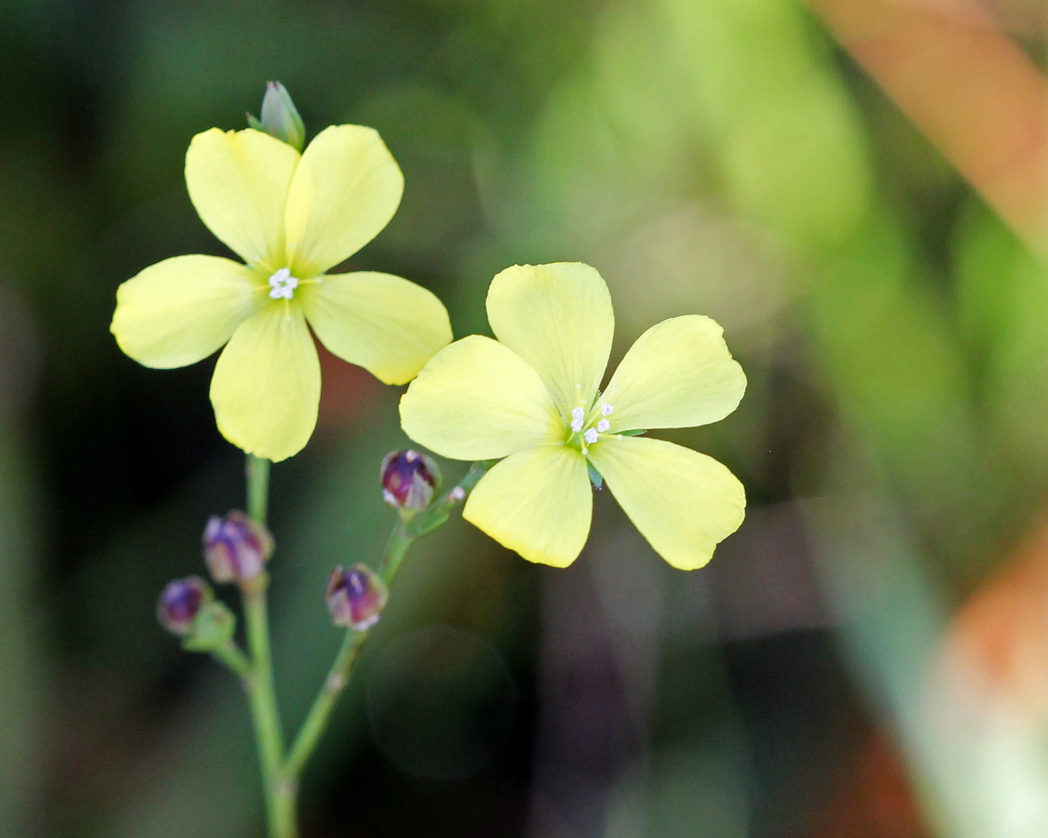Florida yellow flax
Pictured above: Florida yellow flax (Linum floridanum) by Mary Keim. Click on terms for botanical definitions. View post as a PDF.
Florida yellow flax (Linum floridanum) is a demure perennial wildflower found in sandhills and flatwoods throughout the state. It typically blooms summer through fall but may bloom year-round. It is attractive as a larval food to butterflies and moths, including the Variegated fritillary.
Florida yellow flax flowers have five yellow petals, yellow filaments and white anthers. Flowers are borne on or near the end of the stem, but only a few will open at a time. Leaves are small (usually ½-inch long), simple and linear to lanceolate. They are alternately arranged and may become appressed as they ascend the stem. Stems are stiff, glabrous and branched. Fruits are small (about ½-inch long) ovoid capsules.
The genus name Linum is from the Latin word for flax plant, from which the word “linen” is derived. Fibers of common flax (Linum usitatissimum), a cousin of Florida yellow flax, are used to produce linen; its seeds for linseed oil.
Family: Linaceae (Flax family)
Native range: Nearly throughout
To see where natural populations of Florida yellow flax have been vouchered, visit florida.plantatlas.usf.edu.
Hardiness: Zones 8A–10B
Soil: Dry to moderately moist sandy soils
Exposure: Full sun to partial shade
Growth habit: up to 24” tall
Garden tips: Florida yellow flax is not commercially propagated. It is best admired in its natural habitat.

